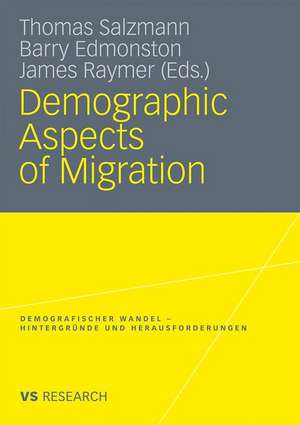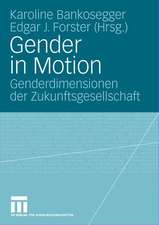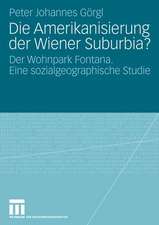Demographic Aspects of Migration: Demografischer Wandel - Hintergründe und Herausforderungen
Editat de Thomas Salzmann, Barry Edmonston, James Raymeren Limba Engleză Paperback – 14 sep 2010
Din seria Demografischer Wandel - Hintergründe und Herausforderungen
- 15%
 Preț: 434.87 lei
Preț: 434.87 lei -
 Preț: 375.26 lei
Preț: 375.26 lei -
 Preț: 377.87 lei
Preț: 377.87 lei -
 Preț: 439.36 lei
Preț: 439.36 lei -
 Preț: 409.66 lei
Preț: 409.66 lei -
 Preț: 411.57 lei
Preț: 411.57 lei
Preț: 380.54 lei
Nou
Puncte Express: 571
Preț estimativ în valută:
72.83€ • 75.65$ • 60.49£
72.83€ • 75.65$ • 60.49£
Carte tipărită la comandă
Livrare economică 03-17 februarie 25
Preluare comenzi: 021 569.72.76
Specificații
ISBN-13: 9783531165417
ISBN-10: 3531165410
Pagini: 350
Ilustrații: 350 p. 52 illus.
Dimensiuni: 148 x 210 x 27 mm
Greutate: 0.42 kg
Ediția:2010
Editura: VS Verlag für Sozialwissenschaften
Colecția VS Verlag für Sozialwissenschaften
Seria Demografischer Wandel - Hintergründe und Herausforderungen
Locul publicării:Wiesbaden, Germany
ISBN-10: 3531165410
Pagini: 350
Ilustrații: 350 p. 52 illus.
Dimensiuni: 148 x 210 x 27 mm
Greutate: 0.42 kg
Ediția:2010
Editura: VS Verlag für Sozialwissenschaften
Colecția VS Verlag für Sozialwissenschaften
Seria Demografischer Wandel - Hintergründe und Herausforderungen
Locul publicării:Wiesbaden, Germany
Public țintă
Professional/practitionerCuprins
The Contribution of Immigration to Population Growth.- A General Framework for Estimating Population Movements.- The Impact of Migration on Birth Replacement - The Spanish Case.- Second Generation Mothers - Do the children of immigrants adjust their fertility to host country norms?.- Selection, Social Status or Data Artefact - What Determines the Mortality of Migrants in Germany?.- Fertility of Female Immigrants in Germany.- The dual demographic profile of migrants in Tuscany.- Immigrant Impact on Employment and Occupational Opportunities of Population in Britain.- Is Recent Immigrant Clustering in Montréal, Toronto and Vancouver Part of the Reason Behind Declining Immigrant Neighbourhood Quality?.- Return migration to East Germany - Motives and Potentials for Regional Development.- The Influence of Regional Factors on Individual Mobility Patterns.- Care-Giver Migration to Greying Japan.
Notă biografică
Thomas Salzmann is Research Scientist, Department of Demography, at Rostock University, Germany.
Barry Edmonston is Research Professor, Department of Sociology, and Associate Director, Population Research Group, at the University of Victoria, Canada.
James Raymer is a Lecturer in Demography in the Division of Social Statistics located in the School of Social Sciences at the University of Southampton, United Kingdom.
Barry Edmonston is Research Professor, Department of Sociology, and Associate Director, Population Research Group, at the University of Victoria, Canada.
James Raymer is a Lecturer in Demography in the Division of Social Statistics located in the School of Social Sciences at the University of Southampton, United Kingdom.
Textul de pe ultima copertă
In all settings of society, migration is an important factor for the development and growth of population. To understand its consequences, it is fundamental to know the quality of the available data, the measurement instruments for analyzing migration, and to have an appropriate demographic framework for studying the demographic effects of migration. Whereas the first section focuses on analysis, the second part deals with the different demographic behaviours of migrants compared to residents. Further it demonstrates the motives and explanations for migration. The final section analyzes geographic and economic aspects. The authors combine demographic analysis, interdisciplinary research, and international illustrations to explore current trends in migration patterns and processes. This book is valuable reading for an interdisciplinary academic audience as well as for regional planners and policy makers.
Caracteristici
Motives, Explanations and Consequences














